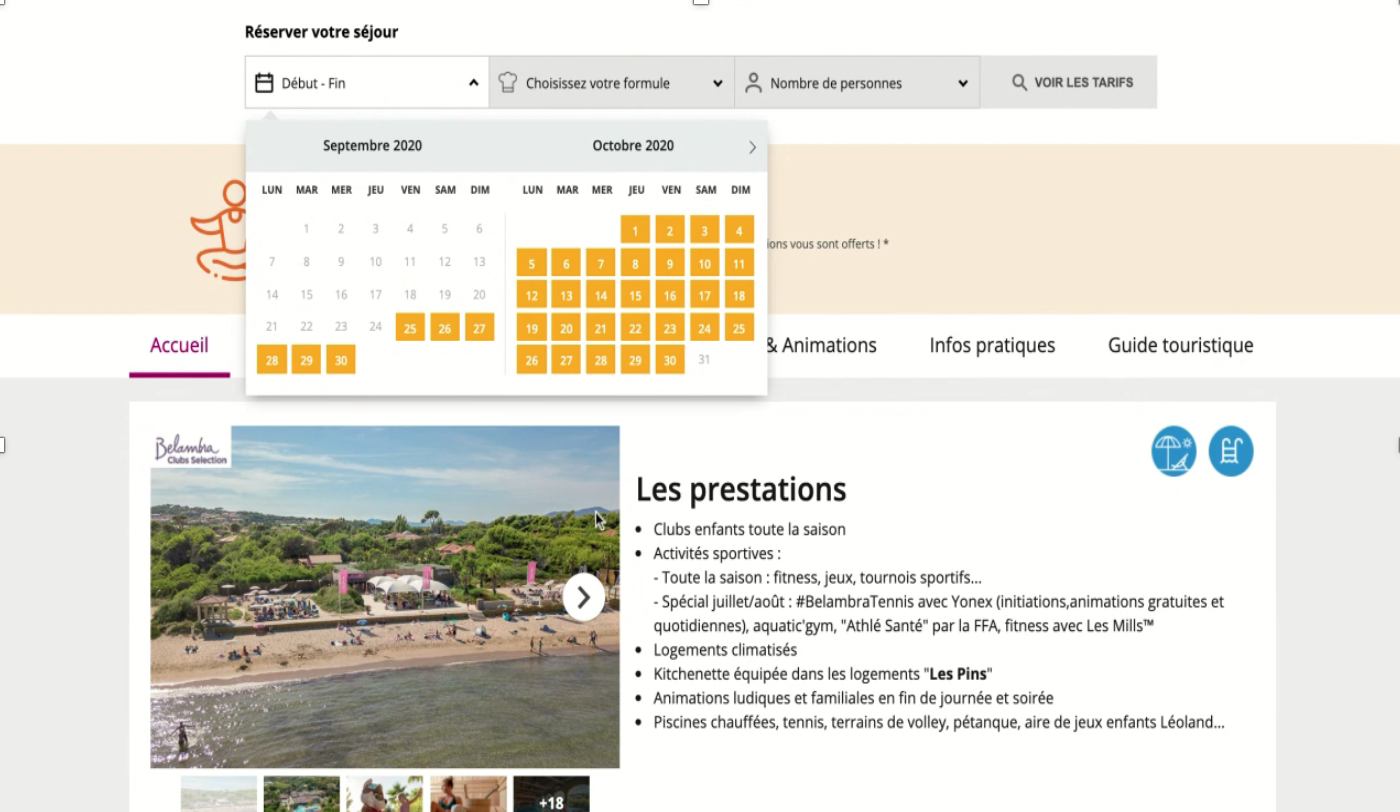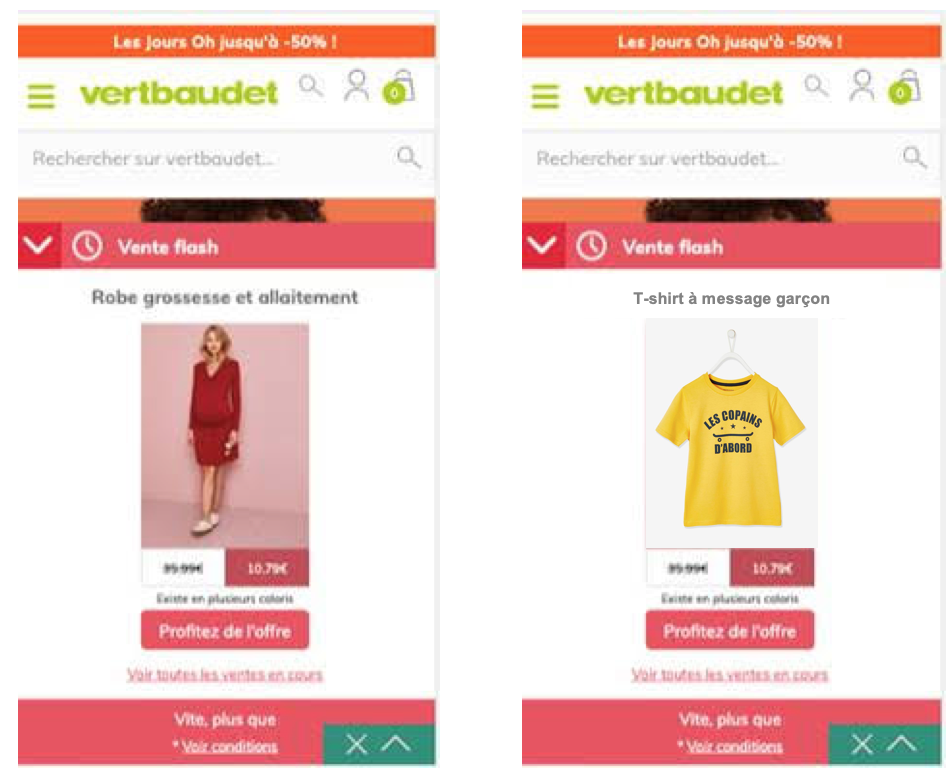
Boost your conversions by reducing your churn rate
Besides conversion rate optimization, churn, also called customer attrition, is a reality for all businesses, particularly in the digital world.
That’s because building long-term customer relationships is clearly linked to higher revenues and greater profitability. Statistics show that customer acquisition costs five times as much as customer retention.
Developing an effective retention strategy requires marketers to focus on optimizing the user experience and personalizing the customer journey online. That means that monitoring the churn rate should be a key performance indicator for your digital marketing as it enables you to pinpoint and analyze where you need to improve customer experience and boost the retention rate.
1 What is the churn rate?
The churn rate (also called the attrition rate) is a metric that measures the loss of customers or subscribers, such as through subscription cancellations, account closures, or consumers switching to a competitor. It enables brands to understand the number of consumers lost over a given period and to monitor the performance of the experience they deliver to customers.
Given the impact of customer loyalty on profitability, the churn rate is a key strategic indicator to be aware of and to monitor closely.
High churn means a loss of earnings
While it is vital to maximize your conversion rate with new customers, it’s also essential to retain those who have already converted and tackle conversion challenges with A/B testing & customer segmentation. Brands know that it costs 5 to 25 times more to acquire a new customer than to retain an existing one. Focusing your actions on keeping your customers is much more profitable than setting out to recruit new ones.
Another study shows that churn costs American companies around $137 billion every year. Every customer that leaves represents a loss of earnings for your company - as well as potentially damaging your brand reputation. Taking the right steps to reduce your attrition rate and improve the loyalty of your existing customers therefore has a direct impact on your turnover and profitability.
LOW CHURN BOOSTS RECOMMENDATIONS AND CROSS-SELLING
It’s easier to sell to a customer who has already converted. A customer who’s satisfied with their experience will be more inclined to upgrade their services or buy complementary products. Moreover, 77% of customers satisfied with their experience with a brand are willing to recommend its services or products. Happy, loyal customers not only make repeat purchases but they become ambassadors and promoters for your brand, both directly and indirectly through channels such as social media.
So when you deliver an exceptional online experience to your existing customers, you are effectively driving long-term profitability by reducing acquisition costs and increasing customer lifetime value. But how should you go about it?
2 How to calculate your churn rate?
The line of business and revenue model of a company will determine how easy or difficult it is to calculate the churn rate.
For companies with a recurring revenue model based on subscriptions or a commitment over a set period of time (such as an annual insurance policy), the churn rate is easy to calculate. Users must cancel their contract, terminate their service or not renew before they can switch to a rival. For example, it is simple for companies working in banking, insurance, media, telephony and service-based businesses to understand the exact number of consumers lost over a given period.
But in other business sectors such as retail, e-commerce, automotive or tourism, it can be more complicated to evaluate the churn rate. This is because it’s not as simple to see whether an individual has gone to the competition when purchases are made one at a time, without any ongoing commitment. However, there are different ways of estimating this rate of loss:
- Calculating your consumers’ purchasing frequency
- Assessing the customer base’s interest (the probability of existing customers buying again)
- Measuring customer satisfaction to identify dissatisfied users
What calculation method should you use?
The churn rate is the ratio of the number of customers lost compared to the total number of customers you have, over a given period, as a percentage. It’s most often calculated over annually.

Example: a brand with 100 repeat customers on January 1st and only 90 on December 31st has an annual churn rate of 10%: 100 - 90 = 10 customers lost. Churn rate = (10/100) x 100 = 10%
3 How to interpret and understand your churn rate
Once you’ve calculated your churn rate, it’s important to correctly interpret it in order to implement a retention strategy that matches the challenges of your brand and sector.
BENCHMARK YOUR CHURN RATE
TNot all business sectors are equal in terms of retaining their customer base - average retention rates vary. Some have very high churn rates because of the way they are structured (cable TV, for example, with an average churn rate of 28%), whereas others have lower rates (like banking, with an average churn rate of 11%). The trick is to know the benchmark in your sector to get a real measure of your performance.
ANALYZE HOW YOUR CHURN EVOLVES
To adopt a relevant retention strategy, it’s crucial to track your churn rate over time. Monitoring this indicator over the long term enables you to get a clear picture of the impact of the actions you’ve taken to reduce churn, and also lets you identify any seasonal variations that might skew the figures.
SEGMENT YOUR CUSTOMER BASE TO REFINE YOUR ANALYSIS
To identify who your most volatile customers are, it’s a good idea for brands to calculate the churn rate of their different customer segments. By adopting segmentation you can adjust your marketing and communication strategy for each group. By reducing churn and improving the customer retention rate for each cohort you can reduce overall attrition.
IDENTIFY THE REASONS BEHIND CHURN
Finally, there may be multiple, different reasons to explain why you are losing customers. You should therefore identify these so you can tailor your response and prevent churn:
- The customer no longer uses the type of product or service, either voluntarily or involuntarily (due to the expiry of a payment card, for example)
- The customer has decided to use a competing product or service
- The customer has switched to a different offering from your brand as it also meets their needs. In this case, it’s possible that your products are cannibalizing each other by being targeted at the same people.
4 Reducing the churn rate using experience optimization and personalization
According to Accenture research, 48% of consumers (that’s nearly half!) say they have left a brand’s website to buy an item elsewhere, because of a bad browsing experience. So if you want to cultivate long-term relationships and minimize your churn rate, you need to offer your visitors a flawless experience across the customer lifecycle. To do this, you must:
- Improve the overall usability of your website using A/B testing to increase engagement, encourage loyalty from your users and improve customer retention
- Target abandoner behaviors, segment your audiences and create personalized experiences tailored to the specific needs of customers who are likely to churn.
Here are some inspiring use cases that may help you to reduce your churn rate:
CREATE AN OPTIMAL ONBOARDING EXPERIENCE
Churn can occur at any point in the customer journey and it’s crucial to provide an optimal user experience from the very first visit. With A/B testing, you can optimize the user journey and make relevant UX decisions to improve conversion rates and customer onboarding.
Belambra reduced the number of clicks to get visitors into its conversion funnel
Leading holiday company Belambra ran an A/B test to optimize its booking form, reducing the number of clicks required by removing the “Clear” and “Confirm” CTAs for selecting the date and number of participants on a trip. The brand also opted for parts of the form to close automatically after options have been selected.

As a result, the travel website saw a 7% increase in visitors entering the booking funnel, and a 14% rise in payment confirmations.
RETAIN YOUR ABANDONERS
To retain customers who are on the verge of leaving your website, you must act at the right moment to lower churn.
Personalization enables you to identify visitors who are about to exit from your site without converting and then deliver an adapted experience in real-time to persuade them to stay. For example, you can personalize the customer relationship by displaying a pop-in, sending a customized email reminder showing what is in their cart to prevent cart abandonment or by offering a selection of the most viewed products relevant to them.
La Dépêche increased new visitor engagement with a loyalty-generating pop-in
Thanks to Kameleoon, the La Dépêche newspaper personalized the experience for its new visitors by pushing a promotional offer (free access to three articles behind the paywall) via a pop-in as they were about to leave the website. As a result, the news website saw a 15% increase in clicks on the articles recommended by the pop-in, as well as a 15% increase in engagement from the visitors exposed to the pop-in.

OFFER A BESPOKE EXPERIENCE ON RETURN VISITS
A high churn rate can be the result of a disappointing or badly calibrated customer experience. By offering a journey that is adapted to each customer profile and personalized according to your visitors’ needs when they return to your site, you make it more likely that you’ll retain your customers, reducing churn and increasing customer lifetime value.
Vertbaudet personalized flash sales based on the visitor profile
Childrenswear retailer Vertbaudet personalized its flash sales and changed the items it highlighted, based on the interests of each visitor, using data from the pages they viewed and add-to-carts during previous visits. Childrenswear retailer Vertbaudet personalized its flash sales and changed the items it highlighted, based on the interests of each visitor, using data from the pages they viewed and add-to-carts during previous visits. This personalized approach led to the click rate increasing by 22%, showing that visitors respond better to be offered deals on products specific to their interests, rather than viewing generic products.

MAINTAIN PERSONALIZED CONTACT WITH YOUR CUSTOMERS
The quality of the interactions with your customer base is also crucial for establishing a long-term relationship built on trust that keeps the churn rate low. Here, personalizing interactions, and building a loyalty program helps you to maintain connections with your consumers and your subscribers.
Le Figaro tackled churn by reminding its subscribers to update their payment information
To reduce churn with subscribers whose bank card was about to expire, media site Le Figaro displayed a notification banner to this segment, on both its mobile and desktop websites. Kameleoon’s personalization solution enabled the team at Le Figaro to easily target subscribers based on the expiry date of their bank card. The banner reminded the visitor to update their banking details, with a CTA giving direct access to their account. The number of banking details updated increased by 2% thanks to this personalization. In this way, Le Figaro improved its subscribers’ experience without spoiling that of other visitors, and reduced churn from passive unsubscribes.
Reducing the churn rate requires improvements across all stages of the customer journey and relies on brands providing visitors with a quality experience and personalized interactions. Marketers must therefore understand and monitor the customer churn rate KPI to measure and analyze the maturity of their retention strategy, and to identify tactics for improvement when it comes to personalizing the purchase journey and customer relationship, especially in today’s increasing subscription-based and digital-first world.



